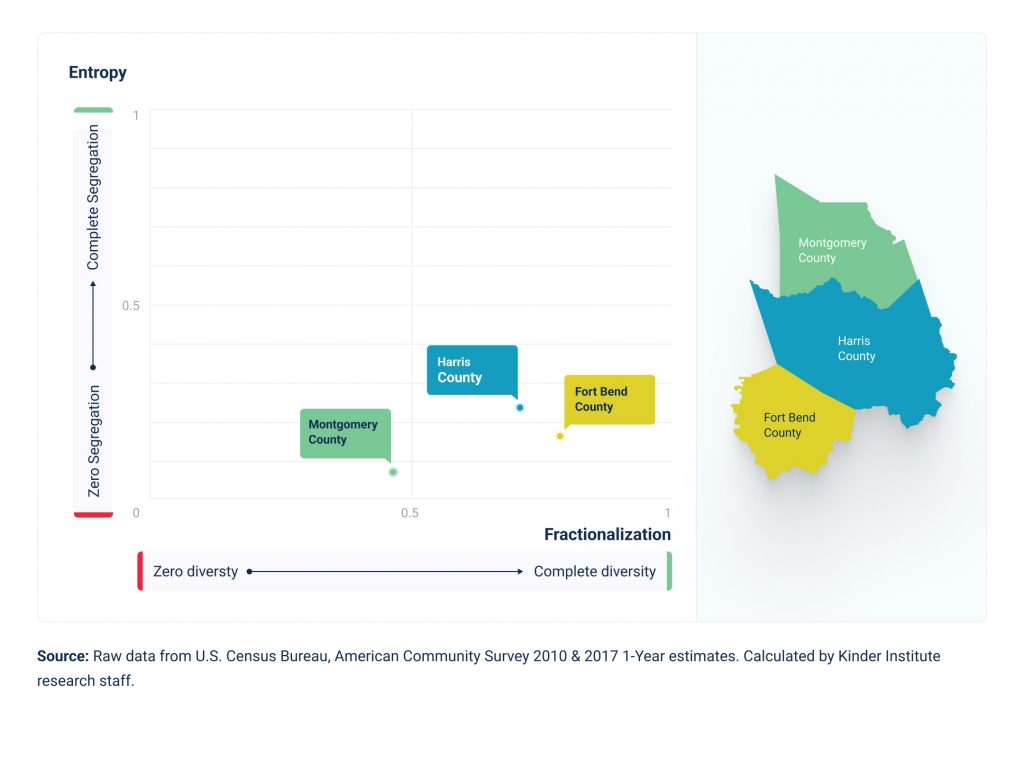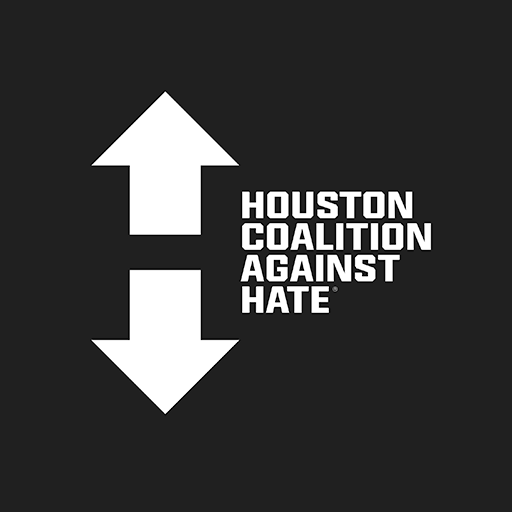Why diversity and inclusion matter and what they truly mean in Greater Houston
It’s no secret that Houston is diverse. The region was recognized for its multiculturalism long before it was reported to be the most racially/ethnically diverse place in the nation. We typically measure diversity in terms of race or ethnicity, but it is also defined as diversity in backgrounds, perspectives, insights, and lived experiences, and Greater Houston is diverse in many ways that often go unnoticed.
But why does diversity matter? Research suggests that companies composed of people with diverse experiences — including gender identity, race, ethnicity, and other backgrounds — tend to financially outperform, make better decisions, and are generally more successful. There is a growing movement in pedagogy that children should experience different cultures, languages, and practices to succeed more in our interconnected world. Our exposure to different perspectives and mindsets makes for a richer, more empathetic, interesting world — it can also challenge stereotypes.
While our population may be diverse — in a variety of ways — our communities can be exclusionary. The very groups which allow us to claim diversity as a strength are the same ones that have been historically marginalized and harmed. Discriminatory policies and practices outlawed decades ago still affect large swathes of the population, who, despite living in the nation’s most diverse region, experience persistent disparities. In many cases, some progress has been made for underserved groups, but for others, the damage has lingered with devastating impacts.
In this article, Understanding Houston is setting out to celebrate Houston’s diversity by taking a look at the ways in which it underpins our region and the ways in which certain populations remain underserved.
Disability status
Over 30 years have passed since the establishment of the Americans with Disabilities Act, and only one significant amendment, the Americans with Disabilities Act Amendments Act of 2008, has been made in accommodation of significant demographic shifts, and to further define what we understand as “disability.”
Disability status is often left out of the conversation about diversity. Nearly 10% of Houston’s three-county region is living with one or more disability, according to data from the U.S. Census Bureau. That equates to more than half a million Houstonians, and researchers estimate that one out of five American households will have at least one member with a minimum of one disability by 2050 because of the aging Baby Boomer population.
While this segment of our population improves our diversity, they have not been fully included in our region’s economic prosperity. In 2020, the rate at which persons with disabilities lived below the poverty line was about double that of folks living without disabilities, according to data from the American Community Survey. People living with disabilities experience significantly lower employment rates, and those who are employed receive significantly lower pay. The National Disability Institute estimates that households containing an adult with a work disability require, on average, 28 percent more income — an additional $17,690 a year for a household at the median income level — to enjoy the same standard of living as a comparable household without a member with a disability. As this population ages and grows, these inequities will only become more acute unless significant changes are made to policy and planning.
Sexual orientation and gender identity
Sexual orientation and gender identity are other vital and under-discussed ways in which our region is diverse. While Pride and sexual/gender diversity have become more widely celebrated in recent years, there is still a long way to go.
Obtaining reliable data on queer populations in Greater Houston is challenging, but we do know that as of 2021, Texas is the state with the second-largest number of LGBTQIA adult residents, estimated to be around 1.7 million people, though this may be an undercount. Attitudes toward the LGBTQIA community have evolved, and support is growing. Both acceptance of same-sex relations and support for same-sex marriage have doubled since the 1990s, jumping from 31% in 1993 to 64% in 2019, according to the Kinder Houston Area Survey.
LGBTQIA individuals make up our residents, our families, our workers, and our visitors. Houston scored above average on the Human Rights Campaign Foundation’s 2021 Municipal Equity Index, a report that measures how thoroughly LGBTQIA residents, workers and visitors are protected from discrimination across American cities. Houston scored perfectly for “offering equivalent benefits and protections to LGBTQIA employees and awarding contracts to fair-minded businesses” and “city leadership’s commitment to fully include the LGBTQIA community and to advocate for full equality,” which led the city to a total score of 76, above the average of 67. While “above average” is a great start, there is still work to be done.
Texas, for instance, still lacks many basic protections against discrimination for LGBTQIA residents. As of 2020, Texas had no official protection for LGBTQIA population from discrimination in housing, public accommodations, credit and lending or anti-bullying for students. As of 2019, LGBTQIA folks in Texas live in poverty at a rate higher than that for cisgender straight people.
Racial, ethnic and linguistic diversity
Greater Houston’s reputation for diversity is often rooted in its extraordinary ethnic/racial diversity. Over two-thirds of Houston’s three-county region is comprised of people of color, who made up 95% of Texas’ population growth over the last decade. This trend toward increasing diversity will undoubtedly continue as the racial/ethnic composition of children under five in the three-county area is even more diverse than our overall population.
The region is made richer by multiculturalism in incalculable ways. Still, many of the diverse populations who contribute to the economy and vibrancy of the region continue to face disproportionate challenges and disparities. Historically underrepresented communities, the majority of our region’s population, have on average poorer health, lower household incomes, lower access to quality housing, among other disparities. Why is this?
That question has many answers, often related to outdated, discriminatory public policy put in place with the intention of keeping American metros racially segregated. Policies that, despite being outlawed today, have done irreparable harm to the quality of life and access to opportunities for entire communities across generations. One of the many discriminatory practices employed in our nation’s history, including the Houston area, was called redlining. Redlining maps were used in the early-to-mid 20th century to determine which neighborhoods would receive public investment and access to home loans. The result of which legally prevented nearly all Black and Mexican Americans from being able to purchase homes.
Homeownership is the most common avenue to building generational wealth. The exclusion of the single most important American investment opportunity does not, however, scratch the surface of how damaging these policies really were to Black Americans.

Redlining maps and other discriminatory housing policies not only prevented Black families from building meaningful wealth, but also ensured that Black neighborhoods would be isolated from access to safe affordable housing, good jobs, and proper infrastructures like parks, roads or stormwater drainage. The result is what we see today — communities that have worse air quality, higher temperatures, limited fresh food options and lower rated schools.
Despite these disparities, segregation levels in the region have ticked down, according to the fractionalization index, which measures the likelihood that two random people in a given area will be of different races or ethnicities. A score of one on this index represents a 100% chance that two random people will be of different racial/ethnic backgrounds, with a score of zero representing that it would be impossible. Fort Bend County (0.75 in 2017) has the highest level of diversity among the three counties, although Harris is right behind it (0.69 in 2017). In Montgomery County, the odds are a little lower at 0.50.
Another way to measure diversity as it relates to segregation is the entropy index, which measures the degree to which racial/ethnic groups are concentrated in specific areas. An entropy index score of one would mean that only one ethnic group was represented in the area, indicating complete segregation, while a score of zero would indicate complete integration. This measure suggests Harris County is more segregated than Fort Bend or Montgomery counties. Although Montgomery County is less segregated than both Fort Bend and Harris counties, it is also the least diverse.

The greater Houston region is also home to exceptional linguistic diversity thanks to its residents who originate from all over the world. Of all three Houston-area counties, Fort Bend County has the greatest linguistic diversity, while Harris County has the most non-English speakers. About 28% of residents in Harris County are limited English speakers who either speak English “not well” or “not at all.” Spanish is the most common non-English language spoken in homes in the three-county region, followed by other Indo-European languages (such as Greek, Hindi, Italian and Persian), Vietnamese and Chinese.
Houston is enriched by diversity
Diversity enriches Greater Houston in innumerable ways, but the population groups that contribute to our diversity have historically faced a disproportionate number of barriers to economic stability, high-quality education, and environmentally safe and healthy neighborhoods. Specific neighborhoods in our region have long been intentionally segregated, resulting in disinvestment and poor quality infrastructure. For our entire region to thrive we need not just diversity or the championing of diversity, but for all of our region’s residents to be able to prosper and benefit from our thriving economy.
Changing attitudes can only bring us so far, but local organizations work every day to both celebrate diversity and to ensure that all residents, regardless of ability, sexuality, gender identity or racial/ethnic background have access to the resources that enable them to thrive. Here are just a few:

DiverseWorks is a nonprofit arts program committed to bringing people from different backgrounds together, presenting art in all forms through collaborations that honor individual artistic vision. They foster civic participation and cross-cultural understanding by taking risks and showing work that might otherwise go unseen.

Houston Coalition Against Hate (HCAH) is a network of community-based organizations, institutions, and leaders who come together to reduce hate and encourage belonging. HCAH does this through education, research, relationship building and prevention initiatives, as well as partnering with organizations to host events that celebrate the diversity that makes Houston strong.
Diversity is less a characteristic of Greater Houston than it is the foundation on which it was built. Greater Houston’s diversity directly informs many other aspects of the region.
Understanding Houston has already paid service to its entrepreneurial spirit, resilience and vibrance — all of which are directly shaped by the diversity of Houston’s residents. The more we meaningfully engage with and work to include all members of our increasingly diverse region, the stronger that foundation — and our region — grows.
